Sungdong Yoo
THEME : Enhancing Thematic Investing with Semantic Stock Representations and Temporal Dynamics
Aug 23, 2025Abstract:Thematic investing aims to construct portfolios aligned with structural trends, yet selecting relevant stocks remains challenging due to overlapping sector boundaries and evolving market dynamics. To address this challenge, we construct the Thematic Representation Set (TRS), an extended dataset that begins with real-world thematic ETFs and expands upon them by incorporating industry classifications and financial news to overcome their coverage limitations. The final dataset contains both the explicit mapping of themes to their constituent stocks and the rich textual profiles for each. Building on this dataset, we introduce \textsc{THEME}, a hierarchical contrastive learning framework. By representing the textual profiles of themes and stocks as embeddings, \textsc{THEME} first leverages their hierarchical relationship to achieve semantic alignment. Subsequently, it refines these semantic embeddings through a temporal refinement stage that incorporates individual stock returns. The final stock representations are designed for effective retrieval of thematically aligned assets with strong return potential. Empirical results show that \textsc{THEME} outperforms strong baselines across multiple retrieval metrics and significantly improves performance in portfolio construction. By jointly modeling thematic relationships from text and market dynamics from returns, \textsc{THEME} provides a scalable and adaptive solution for navigating complex investment themes.
Deformable Graph Convolutional Networks
Dec 29, 2021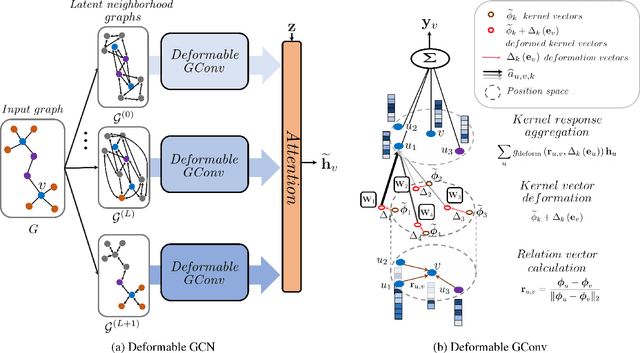


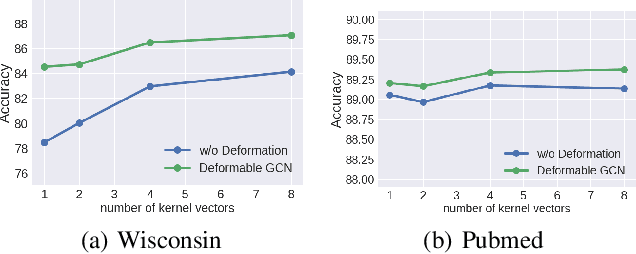
Abstract:Graph neural networks (GNNs) have significantly improved the representation power for graph-structured data. Despite of the recent success of GNNs, the graph convolution in most GNNs have two limitations. Since the graph convolution is performed in a small local neighborhood on the input graph, it is inherently incapable to capture long-range dependencies between distance nodes. In addition, when a node has neighbors that belong to different classes, i.e., heterophily, the aggregated messages from them often negatively affect representation learning. To address the two common problems of graph convolution, in this paper, we propose Deformable Graph Convolutional Networks (Deformable GCNs) that adaptively perform convolution in multiple latent spaces and capture short/long-range dependencies between nodes. Separated from node representations (features), our framework simultaneously learns the node positional embeddings (coordinates) to determine the relations between nodes in an end-to-end fashion. Depending on node position, the convolution kernels are deformed by deformation vectors and apply different transformations to its neighbor nodes. Our extensive experiments demonstrate that Deformable GCNs flexibly handles the heterophily and achieve the best performance in node classification tasks on six heterophilic graph datasets.
Graph Transformer Networks: Learning Meta-path Graphs to Improve GNNs
Jun 11, 2021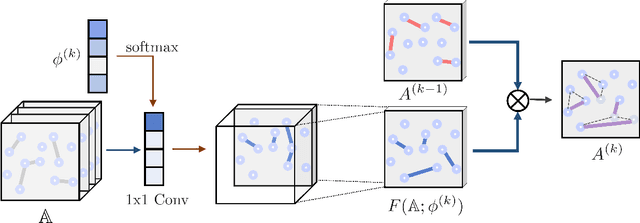

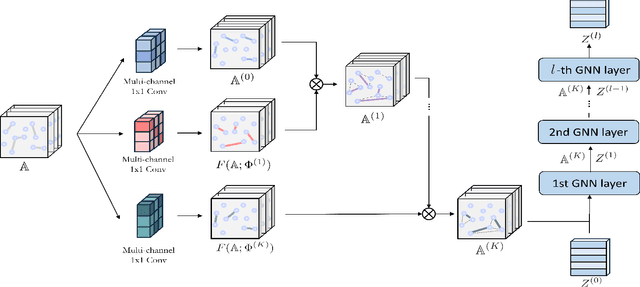
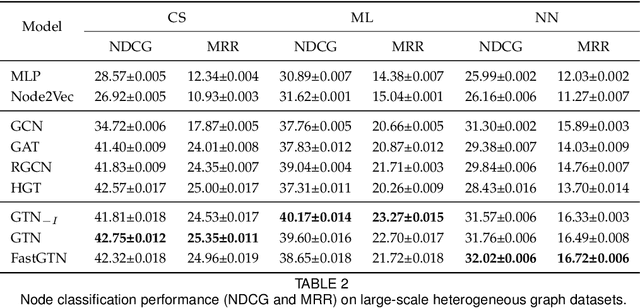
Abstract:Graph Neural Networks (GNNs) have been widely applied to various fields due to their powerful representations of graph-structured data. Despite the success of GNNs, most existing GNNs are designed to learn node representations on the fixed and homogeneous graphs. The limitations especially become problematic when learning representations on a misspecified graph or a heterogeneous graph that consists of various types of nodes and edges. To address this limitations, we propose Graph Transformer Networks (GTNs) that are capable of generating new graph structures, which preclude noisy connections and include useful connections (e.g., meta-paths) for tasks, while learning effective node representations on the new graphs in an end-to-end fashion. We further propose enhanced version of GTNs, Fast Graph Transformer Networks (FastGTNs), that improve scalability of graph transformations. Compared to GTNs, FastGTNs are 230x faster and use 100x less memory while allowing the identical graph transformations as GTNs. In addition, we extend graph transformations to the semantic proximity of nodes allowing non-local operations beyond meta-paths. Extensive experiments on both homogeneous graphs and heterogeneous graphs show that GTNs and FastGTNs with non-local operations achieve the state-of-the-art performance for node classification tasks. The code is available: https://github.com/seongjunyun/Graph_Transformer_Networks
 Add to Chrome
Add to Chrome Add to Firefox
Add to Firefox Add to Edge
Add to Edge